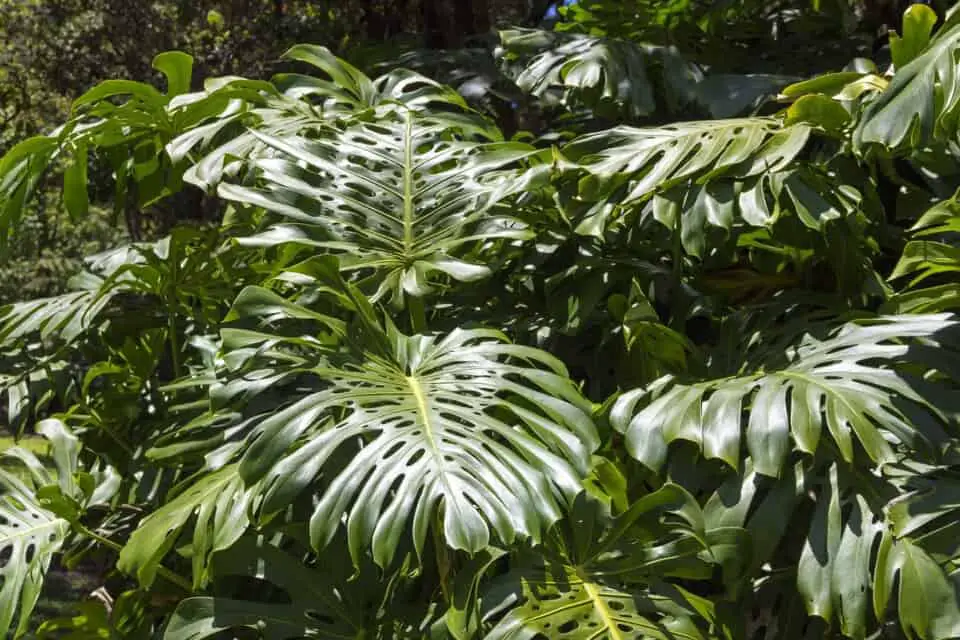Some links in the post are affiliate links and I get a commission from purchases made through some links found in the post.
The other day, I was having some friends over for tea, and one of them commented about how hard it is to care for houseplants over the winter.
And as the conversation ensued and more people chimed in, I realized that she was not alone in her concerns.
Most people don’t know what their plants need in the winter. But part of the problem is the generalized approach we have to overwintering our plants. They are not the same.
A Philodendron is dormant in the winter. That means they rest at this time and do not need you to take care of them as much as you would during other seasons.
As such, it cannot grow as it does in the other seasons, and you may notice that it has stunted growth.
Other plants do not go dormant – like annuals. Thus, the care you give to annuals is not what you would provide to Philodendrons.
So, what does a Philodendron need in the winter and what happens when you don’t give them what they want? This guide has the answers:
How To Care for A Philodendron Over Winter
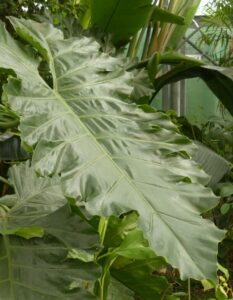 If you watched Game of Thrones, you are familiar with the phrase Winter is Coming. The mention of that alone would excite fans about what was to come. But when gardeners hear that winter is coming, the reaction is not quite the same.
If you watched Game of Thrones, you are familiar with the phrase Winter is Coming. The mention of that alone would excite fans about what was to come. But when gardeners hear that winter is coming, the reaction is not quite the same.
Instead, they understand that the time is nigh to make the proper preparations. Else, their plants die – it is a matter of life and death.
In the winter, the Philodendrons enter dormancy – a resting state. And with the reduced light and temperatures, the growing conditions are no longer ideal.
As mentioned before this means it cannot grow as it does in the other seasons, and you may notice that it has stunted growth.
There is no reason to fret if that happens – it’s all part of the process. Your role at this stage is to ensure the philodendron survives in the winter. And here is how you do it:
1) Lighting
When talking about wintering plants, I like dividing the care into two: during other seasons and winter.
Other Seasons
The Philodendron does best in partial light/partial shade during the other seasons (fall, autumn, and spring). It should not have direct access to sunlight as it can cause yellowing and burn the leaves.
Neither should it be in low light conditions, as this encourages leggy growth. The balance between these extremes is bright but indirect light.
Winter
Your Philodendron will not have access to enough light during the winter because of the short day lengths.
The intensity of light can reduce even further if your Philodendron has small leaves or has big gaps between the leaves. For example, the Split Leaf Philodendron has long gaps between its leaves because of its fenestrations.
To account for this change in lighting, you should move the plant to a brighter spot. Even so, you should not leave the plant directly exposed to the sun’s rays.
What happens if you live in an area where bright indirect light is insufficient? Sometimes, natural light cannot suffice to protect your Philodendron from having leggy growth.
In this case, you can rely on artificial light – notably fluorescents. Please note that too much of this light can cause yellowing.
So, stick with what you would typically use in an office, and the plant should be okay. You don’t need to leave the light on at night.
Did you know that build-up affects light intake? That’s right! In other seasons, you don’t need to pay much attention to how much access the plant has to light.
But in the winter, every hour counts. As such, it is best to clean the plant’s leaves regularly to eliminate any build-up.
That allows the light to pass through, undeterred by dust and dirt. All you need is a soft cloth dipped in water to wipe down the plant.
You may also like: Can a Philodendron be put Outside?
2) Watering
If there is a plant that does not love being overwatered, it is the Philodendron. It would rather be underwatered and make do with dry soil than have soggy soil. As such, its requirements are:
Other Seasons
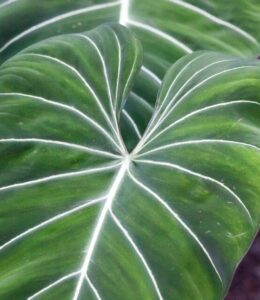 You should water the Philodendron moderately and only when the top inch of the soil is completely dry. If it feels moist, you should wait a few days before checking again.
You should water the Philodendron moderately and only when the top inch of the soil is completely dry. If it feels moist, you should wait a few days before checking again.
And if you are not sure if the soil is dry, you can always use a moisture meter. It helps you stay on track and avoid killing the plant.
What happens when you overwater the Philodendron? – You create an optimal environment for root rot and a hoard of other pathogens that can kill the plant.
And when this happens, you must repot the plant to save it. You should also eliminate the damaged parts to avoid spreading the rot to other plant parts.
Winter
As we mentioned earlier, the Philodendron will go into a state of dormancy when winter comes around. That means it will no longer rely on water much to keep up with the usual cellular activities.
Even so, the plant will still need some water to remain alive. To water in the winter, you must ensure that the top inch of the soil is completely dry.
And it can take up to a month for this to happen. So, you must change your watering schedule.
Moreover, the Philodendron tends to be sensitive to cold water as this can send it to shock. To account for this, we recommend using room temperature water to keep your plant alive.
If you notice any leaf drooping during winter, it can be due to overwatering or underwatering.
Check the state of the soil and analyze your watering schedule to gauge the source of the issue. And rectify it accordingly to avoid killing the plant.
You may also like: What are the Benefits of Having a Philodendron?
3) Temperature
We have to remember that the Philodendron is a tropical plant. And it thus does best in warm and humid regions, which are akin to its native habitat. So, when we move it indoors, we must strive to create similar conditions:
Other Seasons
The Philodendron is not very picky when it comes to temperature. And in most cases, it can do well in temperatures above 55 degrees Fahrenheit.
Moreover, you should protect them from cold drafts. It helps to note that the requirements are plant-specific. So, you might want to check what applies to your plant choice before making any decisions.
Winter
The Philodendron thrives in warm weather and cannot do well in cold regions for too long. That means that exposure to cold drafts can kill it. To protect the plant, you must:
- Move all Philodendron plants from the outdoors to the indoors before winter starts,
- Ensure that the plant gets at least three hours of bright and indirect light per day. If you have trouble finding such a spot, you can use the east or south-facing windows in the home. Or rely on fluorescent light.
- Keep the plant away from heat sources like heating vents. Too much heat can also damage the plant.
- Move the plant away from doors, windows, and other sources of cold drafts.
That’s how you keep a tropical plant alive outside its native habitat.
4) Humidity
As you might expect of a tropical plant, the Philodendron enjoys humidity. And if you live in a hot and dry region, you may need to compensate for this.
Other Seasons
In most cases, you will not need to supplement the humidity in your home in these months. After all, the plant can survive levels as low as 40%.
But if the plant starts showing signs of distress, you can mist it or place the pot in a tray filled with pebbles and water. You can also open the kitchen and bathroom doors to allow humid air to move through the home.
Winter
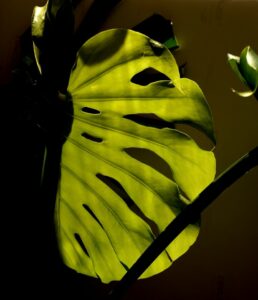 Humidity levels drop by a great deal in the winter. And it makes perfect sense that your Philodendron can start acting up as a result.
Humidity levels drop by a great deal in the winter. And it makes perfect sense that your Philodendron can start acting up as a result.
So, you must begin by measuring the humidity in your home. During winter, it’s likely that the air will be much drier. And the plant’s leaves could start browning, indicating distress.
To help the plant survive this drop, you can mist it occasionally. But since misting requires a lot of work on your part, you can place its pot in a tray filled with pebbles and water.
As the water evaporates, it will make the surrounding air humid, aiding the growth of the Philodendron.
You may also like: Can Philodendron Grow in Shade?
5) Fertilizer
The Philodendron is not the heaviest feeder out there. Some people even go months without feeding their plants, and the results are still breathtaking. But what’s the ideal?
Other Seasons
The Philodendron prefers a balanced liquid or water-soluble fertilizer. You can use it once a month on the soil. And when you see any signs of too much fertilizer, you can take a break.
Examples include leaf yellowing, root damage, etc. Towards the fall, you should cut back on feeding the plant. Ideally, you should only feed it once every six to eight weeks.
That gives the plant adequate time to utilize the fertilizer, ensuring none is left in the soil. Else, the fertilizer can burn the plant roots and kill it.
Winter
We all know that fertilizer is essential to the growth of a strong Philodendron.
However, in the winter, the philodendron goes into a dormant state and does not use up any fertilizer in the soil. As such, any fertilizer at this point will be a waste that also serves as a threat to the plant roots.
What if your plant’s growth appears stunted? You might feel inclined to give your plant a helping hand in the winter. But slow or no growth is typical in the winter.
Wait it out, and when the spring starts, you can resume your feeding routine. As long as the plant has adequate water and light, it will make it through winter.
6) Propagation
Giving rise to young Philodendrons is relatively easy. But should you dare to promote new growth when winter comes calling?
Other Seasons
Growing a Philodendron is easy. All you need is a 3 to 4-inch stem cutting with a few leaves attached.
If you take a cutting from a healthy plant and use a suitable rooting medium, you will have mastered the recipe for a strong Philodendron. You can use water or wet soil as the medium, and soon enough, you should see the new roots.
Winter
Can you grow new a Philodendron in the winter? Unfortunately, their chances of survival are low. Thus, it’s best to wait until winter passes before growing new plants.
We have an article on how to propagate philodendrons in water
7) Soil Requirements
The Philodendron does not like sitting in soggy soil. If you leave it in waterlogged soil for too long, root rot ensues. And to prevent this, you should pay attention to its potting mix:
Other Seasons
The Philodendron does best in a loose potting mix with good drainage. Every few years, you should replace the soil to ensure the plant continues to enjoy a good potting mix by replenishing the nutrients.
Please note that failure to do so can lead to an accumulation of build-up. And when this happens, the leaves start yellowing and browning, and the plant could also suffer stunted growth.
Generally, you should fix this by continuously running water over the soil and allowing the excess water to drain. And after a while, you should repot the plant in a fresh potting mix.
Winter
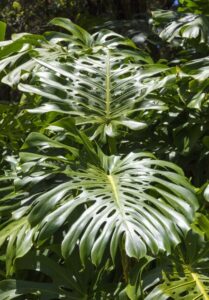 What happens in the winter? Can you repot the Philodendron? We advise against it. The plant is already under a lot of stress on account of the changing growing conditions.
What happens in the winter? Can you repot the Philodendron? We advise against it. The plant is already under a lot of stress on account of the changing growing conditions.
Any more changes can send it into shock. However, if you suspect the plant could be suffering root rot or any other dire problem, you can move it to a fresh potting mix.
Water it thoroughly and leave the soil to dry before watering it again. Keep doing this and provide it with other essential nutrients to keep it from dying.
Below are some of the problems faced when growing Philodendrons in the winter:
- Stunted Growth: We earlier mentioned that the light and temperature changes take a toll on the plant. So, if you notice slow or no growth, don’t worry. It’s a natural reaction to the lack of optimal conditions. Once the dormancy ends, the plant should bounce back.
- Leaf Dropping: Philodendrons make up for the reduced access to light and temperature by shedding their leaves. It’s much more manageable for them to survive this way. Besides, they do not grow much in the winter and do not need to make much food for cellular activities. So, they cut back the same way that most species do – their version of hibernating when things get rough.
- Leggy Growth: Your plant may start exhibiting leggy growth in the winter – this is not normal. Instead, it signifies a lack of adequate exposure to bright and indirect light. Move it closer to a window or invest in good artificial lighting.
Overwatering and over-fertilization are also common problems. To steer clear of them, ensure you only water the plant when its top inch of soil is dry. And do not feed the plant in the winter.
How Cold Is Too Cold for A Philodendron?
The Philodendron is not cold-tolerant and cannot survive anything below 55 degrees Fahrenheit. Exposure to temperatures below this range sends the plant into shock and could kill it.
Final Thoughts
Please keep in mind that different types of Philodendrons need different care requirements. So, use your specific plant guide to supplement the care specifications in this guide. Happy Gardening!
Before you go, here are some more related articles I encourage you to read below to help solve more of your gardening issues:
How to Care for a Philodendron Tiger Tooth?
What is the Rarest Philodendron
Why is my Philodendron Brasil Dying

